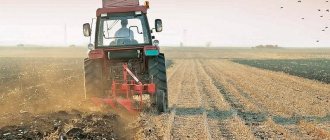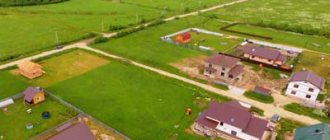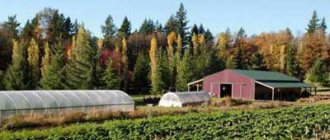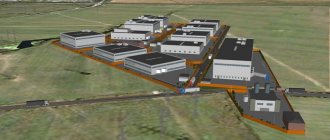- November 4, 2018
- Land law
- Larisa Kudashkina
Recently, the concept of SNT has been heard quite often, especially in light of changing legislation on issues of dacha amnesty and registration of property rights. In this article, we will consider the characteristics of SNT.
The answer to the question, what is horticulture, implies the following definition: this is a branch of plant growing that is engaged in the cultivation of fruit and berry crops (fruit growing), as well as the cultivation of varieties of ornamental plants (ornamental horticulture).
It means a voluntary association of gardeners, which is created to publicly resolve issues related to the management of land plots and the conduct of gardening activities.
What is SNT? The decoding is as follows: a gardening non-profit partnership.
The purpose of such associations:
- simplification of gardening activities;
- land management within plots.
When answering the question, SNT is land for what purpose, let’s consider what exactly is classified as horticultural activity.
This includes:
- tree planting;
- conducting business activities;
- growing various fruit and berry crops.
What does the SNT section mean? The construction of houses and other structures is permitted on such lands. It is possible to live on the territory of the SNT site if appropriate conditions exist for the owner. If the house and plot have been officially registered, then there is a chance to register on the territory of SNT, but the house must be suitable for habitation and registered as private property.
Membership in the partnership implies mandatory ownership of a garden plot, which has a certain size and address. SNT, what it is and the decoding of the abbreviation are found in legal documents that establish the area of responsibility, rights and obligations of the members who are part of this association.
SNT - what is the purpose of this land?
This question is relevant for gardeners. They must be classified as "for general use". These include areas of agricultural land that are located outside the city limits.
The Land Code of 1991 prohibited the use of any other land for ST. It also highlighted that these lands can become the private property of the owners subject to a number of procedures.
In 1998 (and then in 2011), zoning of lands became mandatory, after which the process of their allocation can be carried out. Such lands can be allocated taking into account plans for laying power lines, roads and other important government facilities.
Legislation helps answer questions about the status of SNT land, what it is. We should not forget that these include only agricultural land, but not for personal farming. Land in the SNT must be purchased in accordance with the orientation towards the fact that it is possible to extract from it. Not a single building here will receive capital status. After construction, the house in SNT will not go beyond the scope of a country house. When purchasing land in a partnership, you should know that the cadastral and market value will differ from the plot for individual housing construction.
If the person who purchases the plot plans to erect a permanent structure in the future, he will be disappointed. The implementation of the plan is possible only if the site is designated for individual housing construction, where there is permission and regulations for this type of use.
But a house built on a summer cottage with the category of agricultural land will never receive the status of individual housing construction with subsequent registration and residence of people. However, you can also register in a country house. But for this, the building on the site must meet all standards for year-round use. A special commission is invited to resolve such issues.
This commission is authorized to issue a certificate that the buildings and land are suitable for living all year round. Such a decision is the basis for registering owners in a dacha building if there is an address for the site.
The type of SNT plot is agricultural land; it is not planned to build infrastructure on it, but it is possible to develop it to some extent (lighting, streets).
SNT, DNP, individual housing construction - what is it and what is the difference
In order to understand the above terms, the following should be noted. All of them relate to the use of land provided to private individuals. Any piece of land has a specific purpose and cannot be used for other purposes.
When highlighting it, there must be an indication of the type of use permitted for it. For example, it may be indicated that it is allocated for individual housing construction.
This abbreviation stands for individual housing construction.
Such a plot should be used for the construction of a private house suitable for habitation.
The other two abbreviations hide the names of non-profit associations.
They are created for the purpose of organizing the use, disposal, and resolution of various issues regarding country and garden lands. Such associations can be formed in the following forms:
- non-profit partnerships;
- non-profit partnerships;
- consumer cooperatives.
Consequently, the decoding of SNT is a horticultural non-profit association in the form of a partnership. And DNP is a dacha non-profit association in the form of a partnership.
These two associations are legal entities of a non-profit nature. Let's look at the difference between these associations below.
Cadastral map of SNT
In accordance with the law, each dacha plot must be included in Rosreestr. Each SNT has its own cadastral plan, which helps to quickly and correctly resolve issues with registering rights to a plot. The dacha amnesty law provides for the obligation of gardeners to register their plots until 2021.
Previously, the cadastral plan was like a separate document that could be obtained along with an extract from the Unified State Register, a cadastral passport and a registration certificate. Today, confirmation of rights from the cadastral authorities is only an extract from the Unified State Register of Real Estate.
If you have a cadastral plan of the SNT using coordinate points, it is possible to undergo state registration and land surveying. In their process, the boundaries of the site will be accurately established and secured.
How to correctly transfer SNT or DNP to individual housing construction
Each of the listed types of possible land use has its pros and cons.
The choice in favor of one of them is made based on the purposes for which the land was purchased. At the same time, an increasing number of people want to live in their own home outside the city. Therefore, the question often arises about the possibility of transferring land from one category to another. This possibility is provided for by the legislation of the Russian Federation.
To make a transfer, you must submit a corresponding application to local or executive (state) authorities. In such a petition it is necessary to justify the need to change the category of land. It must be accompanied by documents on the rights to this land and the identity of the applicant.
By law, the period for consideration of this application should not exceed two months. During the review, a decision is made on the possibility of transferring SNT or DNP lands into plots for the construction of private houses. The decision made is formalized in an act.
After receiving such an act, the owner of the site must register the changes in Rosreestr. If a transfer is refused, there must be reasons for it. Applicants have the opportunity to appeal against acts of refusal to change the category of land.
How is registration carried out?
The sequence of stages of creating a partnership is as follows:
- submitting an application to the governing bodies about the desire to create an SNT;
- allocation of land by the authorities according to the zoning plan;
- SNT registration.
The registration process can be lengthy, as it is associated with a number of formalities, including:
- approval of development projects;
- organization project;
- transfer of ownership to SNT;
- compiling a list of founders;
- charter, etc.
Consequences of leaving SNT
The process of leaving a gardening partnership, in itself, is quite simple, however, if you are not careful about this issue, unpleasant consequences are possible. For example, if there is not enough money to pay off any debts.
In this situation, the board of the gardening partnership reserves the right to limit access or completely disconnect the owner from using communications. If the former participant does not repay the debt, the company has the opportunity to file an application in court and recover the entire debt from this citizen.
Once you leave the community, you will no longer be able to attend meetings, but will no longer have to pay taxes or be subject to bylaw rules. If you sign an agreement detailing your communications sharing obligations, you will be allowed to use them for an additional fee.
Joint ownership
All citizens who join the SNT pay so-called membership fees. These funds are spent on ensuring the life of the settlement and the equipment necessary for the comfortable use of all communications. If you decide to leave the community, you still have the right to a share of the community property.
Characteristics of the charter
The articles of association are a legal document that must be drawn up according to rules and regulations and registered. It contains all the basic provisions and rules regarding the activities of the planned partnership. Main sections of the charter:
- Name;
- location address;
- the number of members and the possibility of accepting new ones;
- plot area;
- rules for making and paying contributions;
- rights and obligations of members;
- organizational structure;
- legal form.
Among the main management bodies are: chairman of the SNT, accountant, electrician, etc. There may be other positions. The duties of the chairman include:
- control over the work of other employees;
- compliance with the rules of the charter;
- conclusion of contracts;
- opening bank accounts;
- control of the territory and its condition, etc.
How to submit an application?
Over many years of practice, certain parameters and criteria for compilation have developed.
Below is a sample example:
To the Chairman of the SNT, “name” full name. Plot No. STATEMENT
Please remove me from the list of members of society (name). I urge you to do the following:
- recalculate my share in cash or in kind;
- draw up an agreement, relying on which I can use public goods (including roads, utility networks, etc.);
- At the end of the page, indicate the exact date (day, month, year), put a signature and its transcript.
Land surveying issues
Land delineation is carried out using a set of land management measures, which are aimed at establishing the boundaries of the site. Such a complex is necessary when the boundaries of the plot are not clearly marked, or in a situation where it is necessary to restore the original version of the boundaries. Land surveying makes it easier to determine the location of points and coordinates of the site, and also allows you to determine the exact size of the land.
Land delineation is the determination and consolidation of the boundaries of a site, area and legal registration of land ownership. Geodetic research of an allotment always becomes the basis for drawing up a boundary plan. It also provides the basis for resolving various issues through the courts. After completion of land management, the plot receives an identification number, which is entered into cadastral documents and eliminates territorial conflicts with the owners of neighboring plots.
The objectives of surveying are:
- determination of land boundaries;
- entering data into a unified cadastral registration system;
- exclusion of judicial and extrajudicial disputes;
- preparing land for various transactions;
- assistance in determining the market price of land.
Land surveying of SNT is also a necessary condition for creating conditions for connecting communications.
This includes several main steps:
- Preparatory work, consisting of accumulating information and generating documentation related to the land plot. The main information array consists of data from the government agency that performs the functions of cadastral registration.
- Geodetic work, which boils down to the actual determination of the boundaries of a land plot located in rural or urban areas. A review of the site includes: infrastructure on it, available equipment, analysis of data obtained during the survey, drawing up a topographic plan taking into account the actual size of the land plot, establishing landmarks.
- Creation of a package of documentation for the state cadastral registration agency, including a boundary plan, written agreement with the owners of neighboring land plots and government agencies whose interests are affected by the distribution of land.
The following documents are required to organize the land surveying process:
- passport with a copy attached to it;
- certificate indicating ownership of the plot.
What does the amnesty procedure look like for participants in a gardening partnership?
In 2015, a bill was developed and adopted, which later received the popular name “Dacha Amnesty.” As part of this program, each owner of a summer cottage has the opportunity to turn it into his own property or register it according to a simplified scheme.
Initially, the project was developed to legalize property that was issued by collective farms and horticultural societies to individuals.
In order to register a summer cottage in 2021, its owner will not need to pay anything, but only prepare a declaration and documents. Additional documents will be required for the house registration procedure, but in general the mechanism is significantly simplified, which allows you to transfer ownership of property more quickly and subject to the preparation of a very small number of documents.
Registration of property is possible only under certain conditions, or more precisely:
- the land must be received no later than October 30, 2001;
- previously acquired property is not transferred;
- the allocation of the site had to be carried out by government agencies;
- the territory must be distributed according to property rights or inheritance;
- The purpose of the land is agricultural.
Land for individual housing construction: pros and cons
Unlike the above associations, land for private construction is always located on the territory of a settlement. The purpose of their provision is the construction of residential private houses.
These houses are permanent in nature and are suitable for year-round use. It is not difficult to register in such houses, and it is easier to connect communications to them. Since such areas are located in or near settlements, there are usually no problems with infrastructure there.
Therefore, such lands are better suited for building a house for permanent residence. True, they cost much more.
The tax paid on property ownership will also be higher in this case.
It is not at all necessary to plant anything on this plot of land. Banks are more willing to take such areas as collateral and provide loans for their purchase.
We are building on a private housing construction site
Individual housing construction requires private developers to comply with certain rules and regulations.
There are restrictions on the area of the plots themselves for construction, the number of floors of houses erected on them, and the location of buildings on the site. Land owners must comply with all requirements of sanitary, fire safety, urban planning and other mandatory standards. In addition, special permits will have to be obtained for the construction of houses. And this requires collecting various documentation, preparing a plan for the site itself, and a scheme for its development.
Failure to comply with these rules may result in various fines being imposed on owners. And houses built without permits are recognized as unauthorized and illegal buildings.
What are the rights and responsibilities of SNT members?
The rights of SNT members - what are they? The transcript is presented below:
- participation in meetings;
- the ability to elect the board;
- receiving a report on the activities of SNT;
- carrying out gardening activities on the site;
- the ability to dispose of the site;
- use of infrastructure (electricity, water).
Key responsibilities include:
- it is necessary to pay fees on time;
- development of a garden plot;
- carry out activities on the site in accordance with the charter;
- participate in social events;
- carry out the decisions of the board.
Division of territories
Lands are divided according to their intended purpose into separate categories within the Land Code . Personal plots of citizens and associations created by them are included in the composition of lands of a certain type:
- lands of populated areas;
- agricultural land;
- protected state areas;
- technical and industrial fields;
- water fund;
- territories of reserve lands;
- forest belts and forest plantations.
In addition to the intended use and purpose established for each land, lands within the boundaries of villages and cities are intended for the construction of temporary block-type buildings. The construction of country houses or the construction of an individual house is allowed on them.
Agricultural areas are intended for housing construction, production of vegetable gardening, horticultural activities and breeding of domestic animals and poultry.
Advantages and disadvantages of SNT
When studying the question of what it is - SNT, deciphering the concept, it is possible to consider the following points.
Advantages of gardening partnerships:
- presence of security;
- clean and well-groomed area;
- availability of access roads;
- quietly doing what you love on the site;
- the opportunity to build a house and live in it;
- low cost of land;
- there is no need to create a project;
- beautiful place;
- low tax rate.
Disadvantages of a garden partnership:
- the location may be remote;
- unnecessary additional contributions;
- not everywhere there is good infrastructure;
- problems with registration of rights and registration;
- impossibility of obtaining a mortgage on the plot.
Dacha non-profit partnership: pros and cons
Dacha non-profit partnership refers to associations of persons who have received land for their dacha.
According to the above law, it is provided for organizing recreation for citizens with the right to erect various buildings and grow various crops.
At the same time, it is still necessary to erect buildings on a dacha plot, unlike a garden plot. It will be easier to register your residence in a house on such a site. But problems may also arise with communications to the site. If dacha communities have electricity or running water, you will need to pay an annual fee for them.
Cultivating garden crops and cultivating a vegetable garden at the dacha is not necessary. Therefore, such land is less fertile, but it is cheaper. Plots for summer cottages or gardening can rarely be purchased with a mortgage or pledged.
DNT non-profit partnerships can also be created to use such sites.
Agricultural land for SNT and DNP
In land legislation, all lands in the country are divided into categories. Among them are agricultural lands.
They are allocated only for certain purposes of use, in particular, for summer cottages, gardening, vegetable gardens, farms and personal households. They can allocate money both to individuals and to partnerships and cooperatives. They are located outside settlements, and their main purpose of use is precisely the cultivation of various crops.
Therefore, garden plots can only be provided on such lands. In some cases, a dacha may also be located within settlements.











